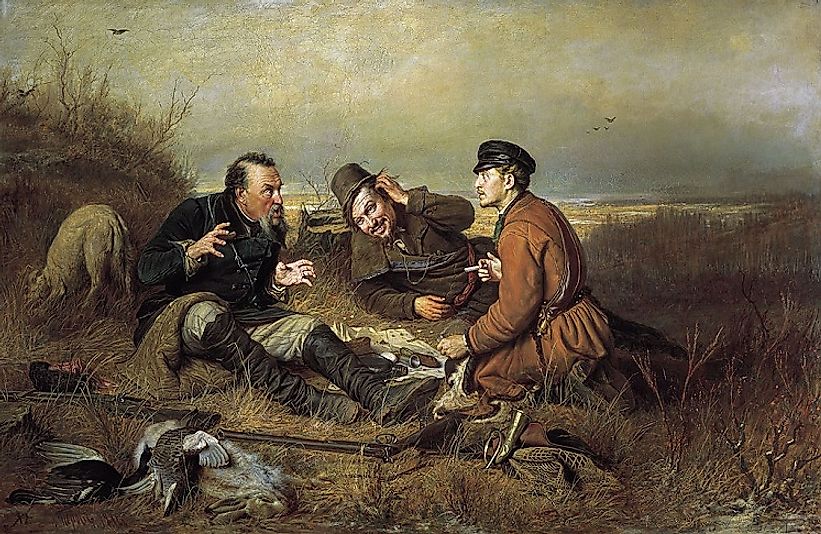The Peredvizhniki Art Movement Of Russia

The Peredvizhniki movement was started by a group of fourteen students from the Imperial Art College in Russia. The students were against the focus of the college on foreign-inspired art and espoused a conservative view towards art. The group left the college and formed their own exhibitions which portrayed humanitarian paintings that mainly depicted the state of the Russian society. They portrayed the plight of the common Russian people in straightforward and understandable art. The group became one of the most important art movements of the 19th Century.
5. Overview of the Style -
The Peredvizhniki movement represented a group of liberal minded painters who considered art to be a form and channel of portraying Russian societal problems and the lives of the Russian people. The style majorly evident in their art was critical realism which later developed into social realism. Art by the group mainly criticized social injustices and inequalities. They employed freestyle and nature painting with lighter palettes. The team also focused on landscape painting which explored the natural beauty of Russia and showed the interactions between human beings and the environment.
4. History and Development -
The Peredvizhniki was formed by fourteen students of the Imperial College after they decided that the policies of the college were limiting. The group formed an independent arts organization under the name Petersburg Cooperative of Artists in 1970. The group represented the art of liberal-minded artists. The cooperative was succeeded by the Association of Travelling Arts Exhibits or the Peredvizhniki. The group organized mobile exhibitions with art which mainly focused on the contemporary life of the people. The group did not rely on state support and had a total of 48 shows between 1870 and 1923.
3. Notable Artists and their Works -
Some of the significant works from the group include paintings by such artists as Konstantin Savitsky, Ilya Repin, Vladimir Makovsky, Grigoriy Myasoyedov, Alexei Savrasov, Ivan Shishkin, Arkhip Kiundzhi, Isaac Levitan, Vasily Perov, Valentin Serov, Ivan Kramskoi, and Nikolai Yaroshenko. The movement's most notable works include Bogatyrs, Morning of Streltsy’s Execution, Reply of the Zaporozhian Cossacks, Everything in The Past, Moscow Courtyard, The Hunters at Rest, The Girl with Peaches, Over Eternal Peace, Night on the Dnieper, A Rye Field, The Rooks Have Come Back, Busy Time For The Mowers, Bankruptcy, and Repairing the Railroad.
2. Decline and Successive Movements -
The influence of the art of the Peredvizhniki decreased gradually towards the start of the 20th Century. The attendance of the Tsar Government officials and the decline in creativity contributed to the slow decline of the organization. The members of the group established restrictive membership terms which discouraged young artists. While some of the members became conservative, others retained the liberal nature of their predecessors. The movement was officially dissolved in 1923. Some of the members joined the Association of Artists of Revolutionary Russia.
1. Cultural and Artistic Legacy -
The Peredvizhniki movement left a substantial mark on Russian art, as well as the culture of the country. Their paintings criticizing the state of justice in Russia motivated the revolutionary movements such as the Russian liberation movement and other revolution leaders like Lenin. The group’s art also led to the development of social realism in the Soviet Union.







